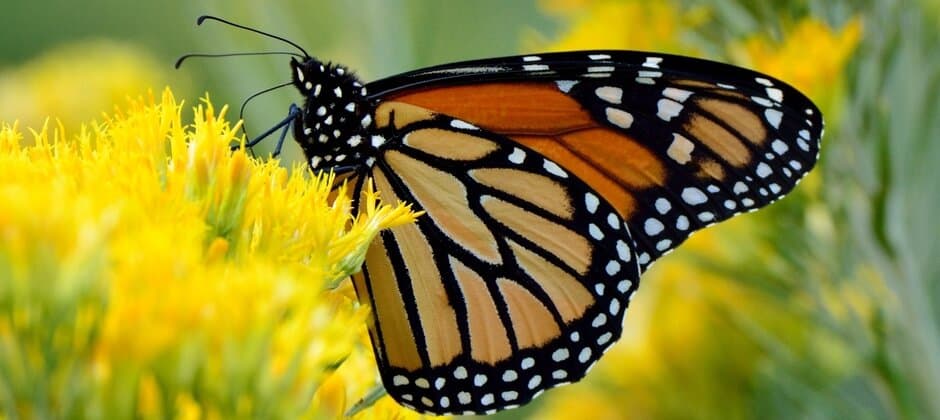Share this article
IUCN lists monarch butterflies as endangered
The International Union for Conservation of Nature has listed monarch butterflies as endangered due to steep declines experienced over the past decade.
Monarchs (Danaus plexippus), which migrate from the United States and Canada to Mexico and California, have shrunk between 22% and 72% in the last decade.
Many point to deforestation in their wintering range and pesticides, agriculture and overall lack of their host plant, milkweed, throughout their range, for their decline. Climate change has also likely played a significant role, increasing catastrophic weather events for the butterflies to grapple with.
“Today’s Red List update highlights the fragility of nature’s wonders, such as the unique spectacle of monarch butterflies across thousands of kilometers,” said Bruno Oberle, IUCN Director General in a press release. “To preserve the rich diversity of nature we need effective, fairly governed protected and conserved areas, alongside decisive action to tackle climate change and restore ecosystems.”
The United States has not yet listed the declining species under the federal Endangered Species Act, although it has been petitioned for listing. In 2020, monarchs were considered “warranted but precluded” meaning that while listing was warranted, other species were of a higher priority.
There are two groups of monarchs in the U.S. The western population, which spends its winters in coastal California and flies to states west of the Rocky Mountains in the spring, are facing the largest declines. Scientists estimate they have dropped 99.9% between the 1980s and 2021. The eastern population, which migrates from east of the Rocky Mountains to central Mexico, also declined by about 84% between 1996 and 2014.
“It is difficult to watch monarch butterflies and their extraordinary migration teeter on the edge of collapse, but there are signs of hope,” said Anna Walker, member of the IUCN Species Survival Commission Butterfly and Moth Specialist Group and species survival officer at the New Mexico BioPark Society who led the IUCN monarch assessment in a press release. “Many people and organizations have come together to try and protect this butterfly and its habitats. From planting native milkweed and reducing pesticide use to supporting the protection of overwintering sites and contributing to community science, we all have a role to play in making sure this iconic insect makes a full recovery.”
Others stress the point of continuing research on the species. While efforts to protect this species are encouraging, much is still needed to ensure its long-term survival,” said Sean O’Brien, president and CEO of NatureServe, a nonprofit organization that provides wildlife conservation data. “Never has there been a more pressing time to collect data, like that provided by the NatureServe Network, on our nation’s biodiversity.”
The monarch joins 147,517 species on the IUCN’s Red List.
In addition to the monarch butterfly listing, the organization made some adjustments for other species’ statuses as well. A global sturgeon reassessment showed that 100% of the world’s remaining 26 sturgeon species are now at risk from extinction. The tiger (Panthera tigris) has also been reassessed, revealing 40% more tigers since the last assessment in 2015.
Header Image: Monarch butterflies are now listed as endangered under the IUCN Red List. Credit: Joe Schelling








